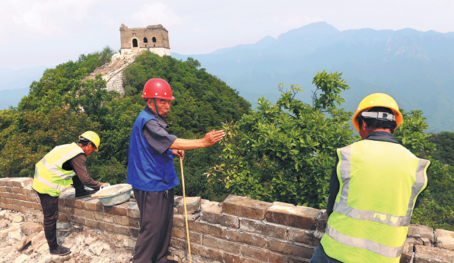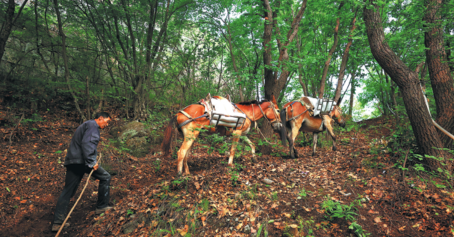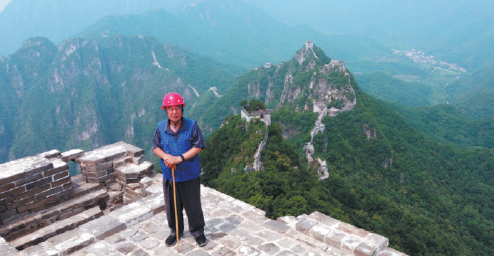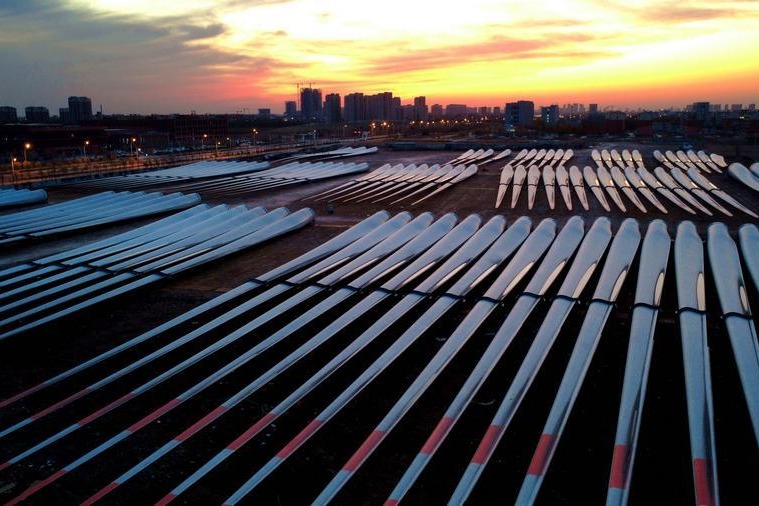Rebuilding brick by glorious brick
Work on the Jiankou section of the Great Wall takes a new approach to restoring its former beauty

The Great Wall of China, which runs for more than 21,000 kilometers along the country's northern frontier, stands as a testament to human ingenuity. Each summer, it draws thousands of international visitors to Beijing that are eager to scale the wall and marvel at its grandeur.
Yet, popular and well-maintained sections like Badaling and Mutianyu represent but a small portion of the structure. Rugged terrain and isolation have left other stretches dubbed "wild walls "in disrepair. This particularly applies to the Jiankou Great Wall, which despite climbing bans, still lures the intrepid.
The Great Wall protection project launched in September 2016 by the China Foundation for Cultural Heritage Conservation and the Tencent Foundation aims to prevent further damage and preserve the Jiankou section for future generations. It is supported by the Beijing Municipal Cultural Heritage Bureau and Huairou district's cultural and tourism bureau.
There have been four restoration phases since 2016, with 4,520 meters of the 7,850-meter length tackled on this section of the Great Wall in Yanqi town, Beijing's Huairou district. This year marks the start of the fifth phase, which will restore a further 915 meters, including six watchtowers and five side sections. Work is expected to be completed by November 2026 and, to date, two watchtowers have been examined by archaeologists.
The project is making use of advanced technology and new techniques in an effort to maintain the wall's historical integrity. Shang Jinyu, the project's digital technology director, points to the use of drones for panoramic photography and data collection to create a model of the Jiankou Great Wall. The method permits the storage of data before and after restoration so that engineers and workers can determine whether or not the minimal intervention guidelines are being followed.
"Each drone image feeds into our archaeology program's system, allowing us to monitor the wall's condition and ensure minimal disturbance during restoration," Shang explains.
Shang Heng, an associate research fellow at the Beijing Archaeological Research Institute, contrasts this with past practices, which relied on ground observation and were often piecemeal, lacking a holistic strategy.
This approach enables a comprehensive study of the site, enhancing the thoroughness of the restoration.
To date, around 100 artifacts have been unearthed at Jiankou, including architectural fragments, military equipment and domestic items. "These finds help us understand the Ming Dynasty (1644-1911) soldiers' lives, from diet to weaponry," Shang Heng says.
He emphasizes the value of undisturbed ruins to archaeologists, as they provide a clearer picture of the past.
The philosophy behind restoration has also evolved. "The Great Wall is a cultural heritage site, blending the features of ancient architecture with those of an ancient ruin. We're now recognizing it more as an ancient ruin," Shang Heng says.
This shift has sparked a debate over vegetation on the wall. While no trees grew on it while it was in use during the Ming Dynasty, some believe the current flora adds to the wall's historical ambience. A compromise has been reached to keep some trees that don't threaten its stability.
Restoring Jiankou remains challenging, with issues involving getting materials and water to the site. High-pressure water pumps and mules are used to mitigate these difficulties, with mules transporting supplies to a base camp to protect the wall from damage from their hooves. Workers then carry the materials up the steep slopes.
Restoration expert Cheng Yongmao speaks of his reverence for the original materials.
In order to ensure that the repaired sections reflect the original, the project is trying to minimize the use of modern materials. The bricks scattered around the site are picked up and reused.
"We will use every fragment of the original bricks, even a quarter of one, because some are over 400 years old," he says. "We have to honor the wall's legacy."
The demanding work requires physically fit workers, typically from mountainous regions like Chengde, Hebei province, who are accustomed to the terrain.
Despite the arduous work, there's a sense of pride. The workers, who can only work on the wall from April to October due to the region's harsh winters, find respect upon returning home. "It's a matter of pride to say they've worked on the Great Wall," Cheng says.
"When they return home in November, they talk to their neighbors. They say, 'I was restoring the Great Wall in Beijing', and everyone admires them. Even though it is tiring and hard, they are still willing to do the job because they love what they do. It takes seriousness, dedication and responsibility to protect the Great Wall properly," he says.
Huang Jiaying contributed to this story.






Today's Top News
- Macao SAR holds flag-raising, reception to mark 26th anniversary of return to motherland
- China issues rules to regulate pricing practices of internet platforms
- US hits over 70 IS-linked targets in Syria in massive retaliatory strikes
- Technological innovation brings cultural heritage alive
- Consumption to play bigger part in growth
- Opposition moves to impeach Lai






























